We all know how important probiotics are to a healthy digestive system. However, most over-the-counter probiotic supplements don’t even come close to the amount of good bacteria found in real fermented foods, like yogurt. Plus, probiotics in pill form tend to colonize right at the beginning of the small intestine, while fermented foods carry those good bacteria all the way through the digestive tract where they belong. So while a good probiotic supplement can be very helpful in healing a damaged digestive system, it’s an even better idea to eat fermented foods. Not only will the digestive benefits be greater, but you’ll spend a lot less money for a lot more bacterial punch!
I’ve already shown you how to make your own yogurt, but the fermenting possibilities go far beyond this! You can pickle almost any vegetable, in fact, and even some fruits. (And before you ask, no, the jarred pickles and saurkraut at the store are not truly fermented the way we’re talking about, they’re just soaked in sterilized vinegar to quickly achieve a similar taste with none of the time invested for proper fermentation to happen. There are no probiotics in those little Vlasic sandwich-stackers.)
So come on then, let’s make some saurkraut, which is just the German word for pickled cabbage. Peel the outer leaves off so it’s clean, and cut one entire head of cabbage into quarters. Then slice the stem out of each piece like this.
Lay each hunk on its side and slice it thinly. You can give it a cross-cut or two if you think the pieces are too long.
Throw everything into a giant bowl, and sprinkle in 2 Tablespoons of salt. This is the magical ingredient that makes the whole process work.
Now, start gently massaging your cabbage pieces. It may feel kind of pointless at first, but before you know it things are going to start getting very soft, and releasing a ton of liquid. This is because the salt is drawing the water out of the plant cells as you politely bruise them. It’s probably going to take about ten minutes of massaging, so just knead it at your own pace, don’t give yourself arthritis trying to throttle it.
I find it pretty effective to take two big handfuls and rub them together like sandpaper. See how juicy everything’s getting?
Eventually, you will have enough liquid that you can cram everything inside a clean mason jar, and all of the cabbage will be submerged.
You can squash it down with a spoon if necessary, but it’s vitally important that everything stays underneath the surface. The natural Lactobacillus species in the cabbage is going to grow just fine in this super-salty environment, while bad bacteria species can’t tolerate it. However, anything exposed above the surface of the liquid won’t have that salty protection. It will ferment with bad bacteria instead, which is just another way of saying it will spoil and rot.
As the soon-to-be saurkraut begins turning that salt water into vinegar, it will also be producing gas, so you need to cover it with a cloth instead of a tight lid, to relieve the pressure. Trust me, you do not want a jar of fermenting vegetables exploding in your cabinet. And that’s the best place to put it, by the way, somewhere dark and moderately warm where it won’t be disturbed too often. I use the cabinet over my clothes dryer. Leave it there for 4-5 days, checking on it once in awhile and adding a little water to the top if necessary, or pushing the cabbage back down with a spoon so any trapped bubbles can get to the surface.
Your growing conditions are going to depend on a lot of factors, so yours may ferment faster or slower than others, but in general, it’s done when you want it to be done. The longer it sits, the more bacteria it will grow, at least until the colony reaches critical mass. I wouldn’t let it sit for more than 6 days at the most, though. When you’re ready, just put the lid on and move it to the fridge, which will halt the growth of the colony but not kill anything.
When you make your second jar — that is, when you are surprised to discover you’ve already gobbled down that whole first batch and you don’t really remember doing it — add in a little of the leftover liquid from the first jar, and it will act as a great starter colony to get everything going that much faster. And remember, the Germans were fondest of cabbage, but you can do this with grated carrots, beets, ginger root… whatever you like!
Happy Fermenting!
Saurkraut
1 head of cabbage
2 TBS salt
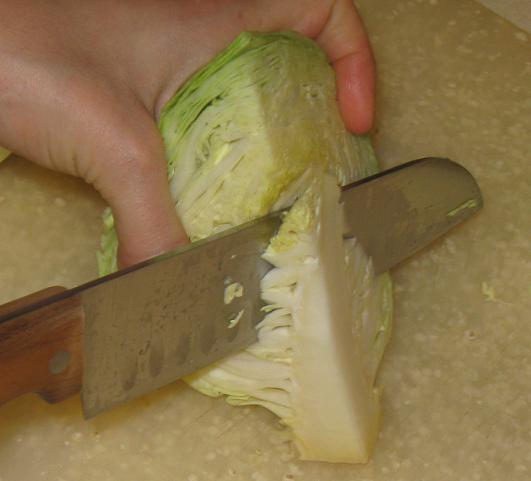
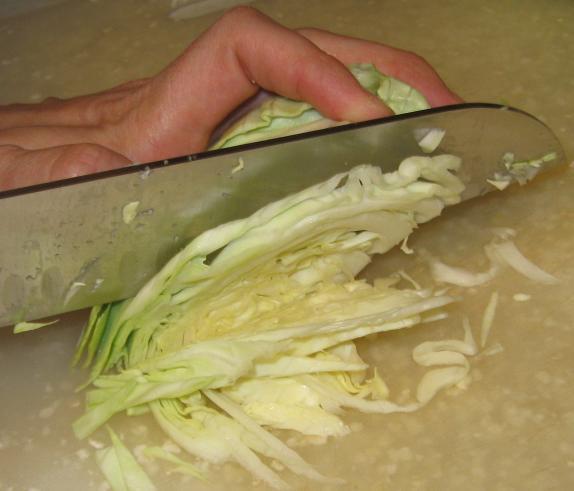
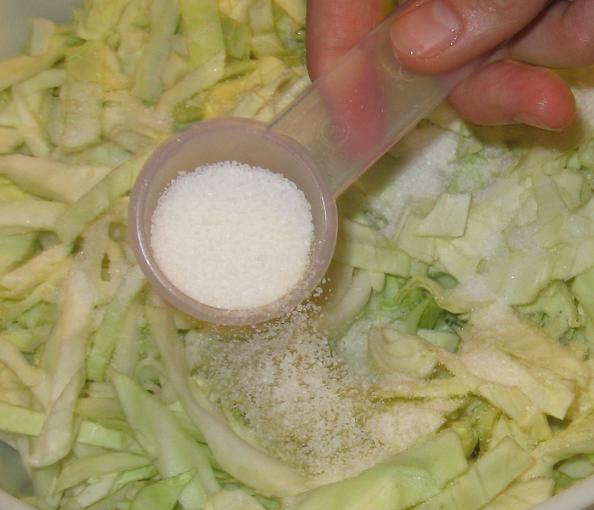
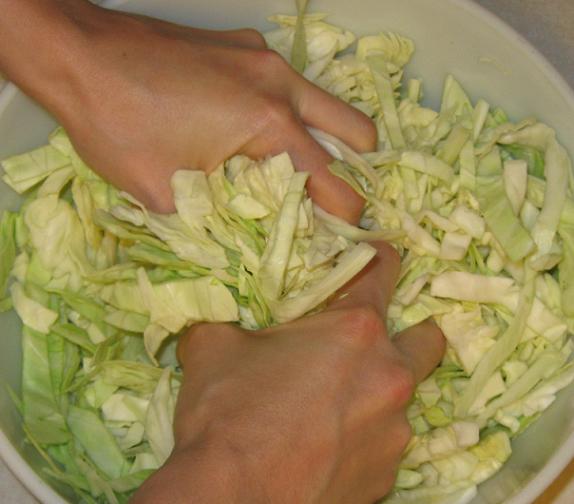
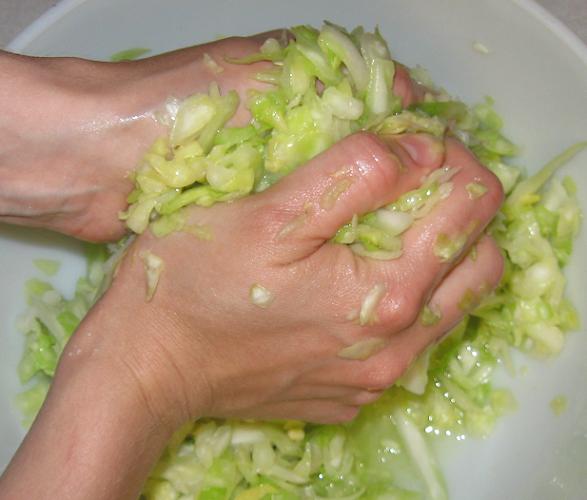
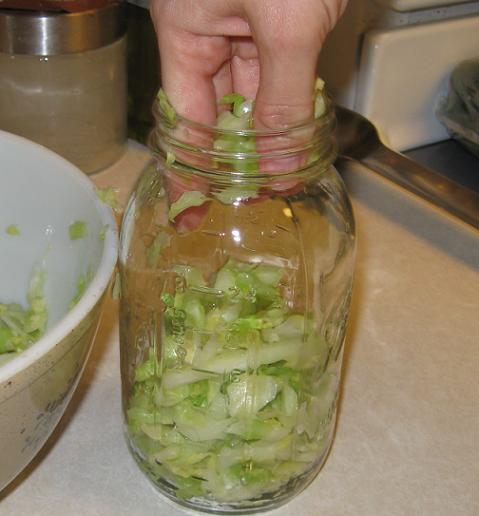
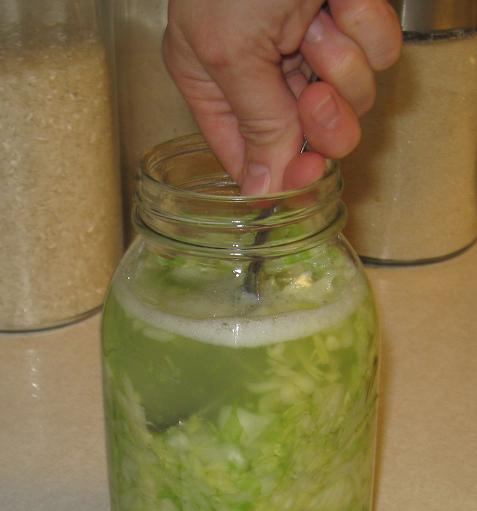
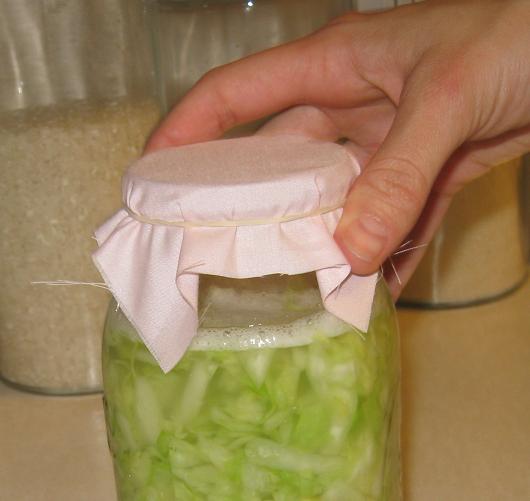
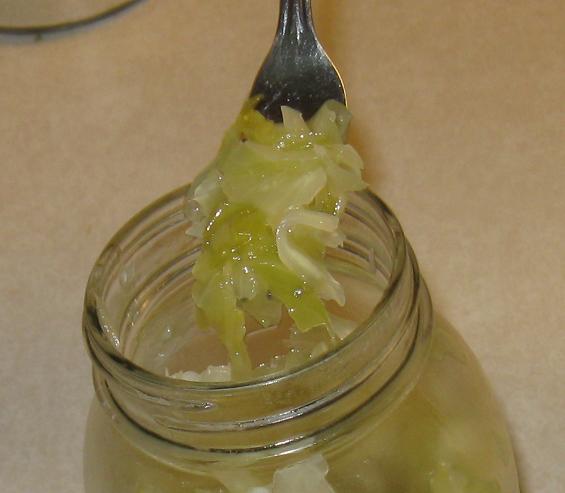

Ironically (or not), I’ve got a big dish of sauerkraut on the fire downstairs, except that I used a German deli jar. Obviously, I’ve got to make my own.
If you stomp it with your feet, like the French, it might taste zippy.